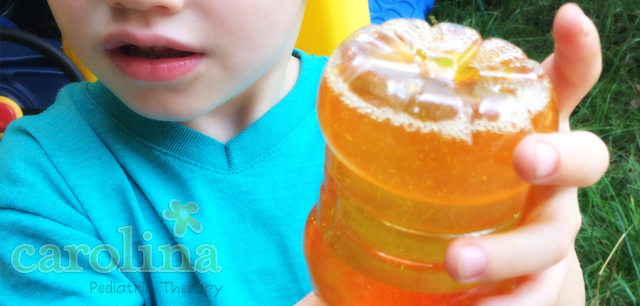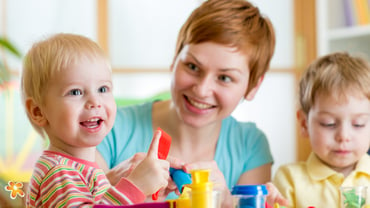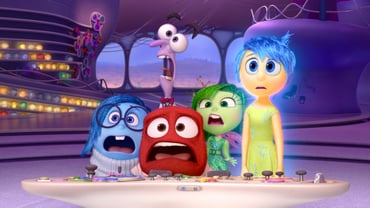How to Make Sensory Bottles
Recommended Ages - All ages
What Are Sensory Bottles?
We learn about the world through using our senses; however, for children with Sensory Processing Disorder, sometimes this can become difficult. Sensory bottles are an easy and cheap craft for children of all ages that incorporate sensory stimulation.
Your child’s sensory bottles can come in all shapes and sizes and can be personalized to fit their preferences and needs. In our instructions below, you’ll discover that sensory bottle DIY projects are not only practical but can be a great bonding experience for your family.
Sensory Bottle Materials
- A clear plastic water bottle of any size will be perfect for a sensory bottle. If you are making more than one, incorporate several different shapes and sizes to provide variety and different sensory experiences.
- Small items to go inside the sensory bottle. This is where you get to be creative. Sensory water bottles with glitter, pom-poms, small toys, confetti, and buttons are all popular options.
- Food coloring.
- Water.
- Glue and/or duct tape.
How to Make Sensory Bottles - Directions
- Clean your future sensory bottle thoroughly, and make sure to remove any labels and stickers.
- Fill the bottle about 3/4 of the way full with water.
- Add a few drops of food coloring in the desired colors. The more drops you add, the darker the color.
- Add your chosen sensory bottle items. Make sure you don’t add too many items, or it won’t “flow” properly.
- Add some glue to the rim of the bottle and screw the lid on tightly. Hot glue is the most effective and the quickest drying, but any glue will do. For added security, you may want to add some duct tape over the lid.
Sensory Bottle Variations And Activities
Sensory water bottles aren’t the only option. No matter what your child’s needs, your sensory bottle DIY project can be customized to meet them.
There are an infinite amount of variations and additions that could be included in your family’s sensory bottles, but here are a few fun suggestions:
- Soap Sensory Bottle. Add a few small squirts of dish soap to your sensory bottle for some fun bubble action every time you shake it.
- Lava Lamp With Baby Oil. Fill your bottle 1/4 to 1/2 full of colored water, then add baby oil or mineral oil until the bottle is 3/4 full. The oil and water stay separate, which can add some “lava lamp” type fun.
- Sand Sensory Bottle. Replace the water with sand or rice and make a “hide and seek” bottle.
- Themed Sensory Bottles. If your child likes the beach, replace the water with sand. Then add seashells and other beach-themed items to your bottle. If the sky and stars are more their style, tint the water dark blue and add glitter and small glow-in-the-dark stars in the mix.
- Sensory Bottle Activities. Make a list of the objects you placed in your sensory bottle (great with ABC or number beads), and then see if your child can find them all. Make two bottles and have a race to see who can find all the objects first.
Your Child’s Involvement In Sensory Bottle DIY
It is important to allow your child to participate as much as possible when making the sensory bottle. Joining in with the sensory bottle DIY project is an important part of the sensory experience. Even if they are capable of creating the sensory bottle unassisted, be involved and interested in their work. Make your own bottle as well, and talk about the differences and similarities between your two creations.
Remember, a glitter-filled sensory bottle is a neat treasure, but spending one-on-one time and making memories with your child is the real reward.
Sources:
http://www.childcarelounge.com/activity/sensory-bottles.php
http://fortheloveoflearningblog.blogspot.com/2013/01/sensory-bottles.html
http://theimaginationtree.com/2012/10/baby-sensory-play-discovery-bottles.html
http://www.autismweb.com/sensory.htm
Making A Sensory Bottle
~ Shandy Marso, Contributor
Carolina Pediatric Therapy © August 2014
Want to know how a Therapist can Help?
Call (828) 398 0043 or click on the schedule button.



